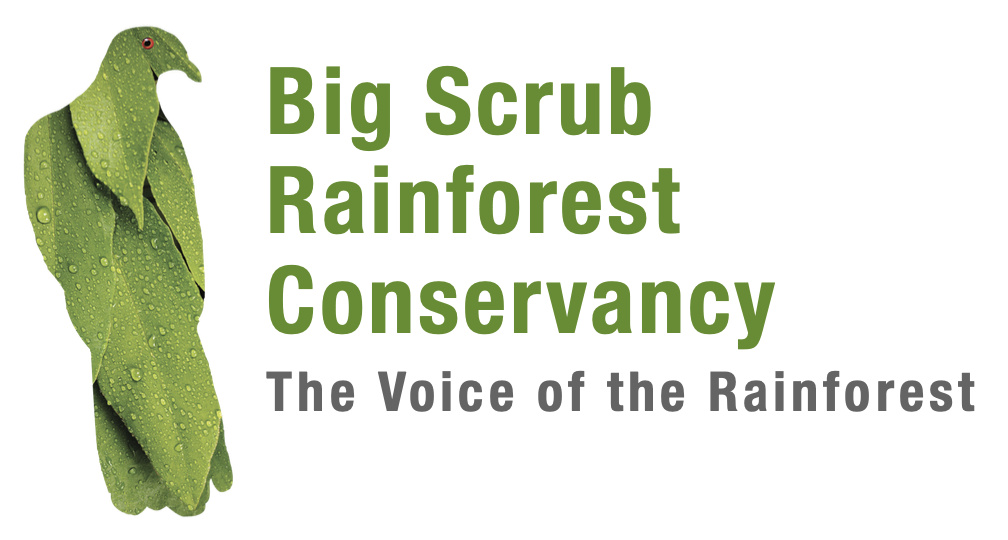BSRC had another great year in 2022-23.
Our long-term, world-leading Science Saving Rainforests Program continued to make steady progress. To date, leaf samples have been collected from 12,352 individual trees. Collections have been completed across the range of 23 key structural species and 9 threatened species in NSW and Qld. Good progress has also been made in leaf sample collections for the remaining seven key structural species and 21 threatened species.
DNA has been extracted and sequenced from 5,538 leaf samples collected across the range of 22 species by our contractor, Diversity Arrays Technology.
The DNA data is transmitted for genome analysis to our major partner, the Research Centre for Ecosystem Resilience, part of the Botanic Gardens of Sydney. To date the genomes of 10 species have been analysed. These analyses will identify, for each tree species, up to 30 or more populations where leaf samples have been collected and which would collectively capture 90% of the genetic diversity of the species in our local region as well as targeted populations to our north where the current climate matches the 50-year forecasts for our region.
This optimal genetic diversity will be incorporated into planting stock grown from propagules collected in each of the identified populations; it will help avoid inbreeding and provide the best possible resilience to climate change and other threats such as new diseases and insect predators. The planting stock will be used in developing three living seed bank plantations of more than 25 key structural species that will incorporate translocation plantings of up to 30 threatened species. These plantations will be a source of propagules (cuttings, juveniles and seed) that will provide planting stock for more sustainable plantings to restore critically endangered lowland subtropical rainforest and to recovery threatened species. The plantations will also be demonstration sites to illustrate this methodology.
The Science Saving Rainforests Program is funded principally by the Big Scrub Foundation, the NSW Government and the inGrained Foundation.
The Conservancy’s long-term ongoing Remnant Care Program rehabilitates and provides ongoing care of more than 500 ha of critically endangered lowland subtropical rainforest in 42 Big Scrub remnants, including ten in NPWS National Parks and Nature Reserves plus other important remnants on public and private land. The Conservancy organises regular weed control at each remnant by professional bush regenerators, who also monitor outcomes including improvements in native rainforest vegetation and reduction in weeds. Special care is given to threatened species to facilitate their recovery. Our expert bush regen teams completed 327 person days in 2022-23.
Our Remnant Care Program is funded from a number of sources, including the Rekindle Foundation, The Big Scrub Foundation and the NSW Environmental Trust.
It is encouraging that some landholders are continuing to take over the care of their remnants from us. Last year, Ballina Shire Council took over the care of four of its remnants that our sister organisation had been looking after for more than 20 years.
In 2022-23 the Conservancy also deployed considerable resources repairing the damage caused to a number of remnants by the record floods in projects funded by North Coast Local Land Services and NSW Government’s Saving Our Species program.
The Conservancy’s other ongoing programs, Community Engagement, Schools and Re-establishing Rainforest, continue to inform our children and the rest of our community about the beautiful Big Scrub Rainforest and its restoration.
The Conservancy’s programs will make a significant contribution to helping save from extinction our Gondwana-descended, internationally significant critically endangered lowland subtropical rainforest and its many threatened species. The methodology of our Science Saving Rainforests Program can be applied to restore degraded rainforest and other seriously degraded forest ecosystems and recover their threatened species elsewhere in Australia and around the world. The methodology can also be applied to increase the long-term sustainability of major reforestation projects and the longevity of carbon sequestration plantings. For more information on our SSR program, please visit https://www.bigscrubrainforest.org/programs/science-saving-rainforests-program/
I wish to extend special thanks to:
- Renee Borrow and the other members of our Management Team – Mark Dunphy, Georgie Jones, Martin Brook and Chris Byrne – for their dedication and hard work, without which the Conservancy would not achieve its continuing success;
- the key individuals in our partner organisations in the Science Saving Rainforests Program, including Maurizio Rossetto, Rob Kooyman, Mark Dunphy and Richard Dimon;
- the Team Leaders and members of our Bush regeneration teams, who do such a great job;
- members and supporters who have kindly donated to the Conservancy in 2022-23, and
- the many volunteers who help us run our many activities.
Finally, I invite more members and community people to become donors and participate in the world-leading ecological restoration projects of the Conservancy. Donations can be simply made online here.


